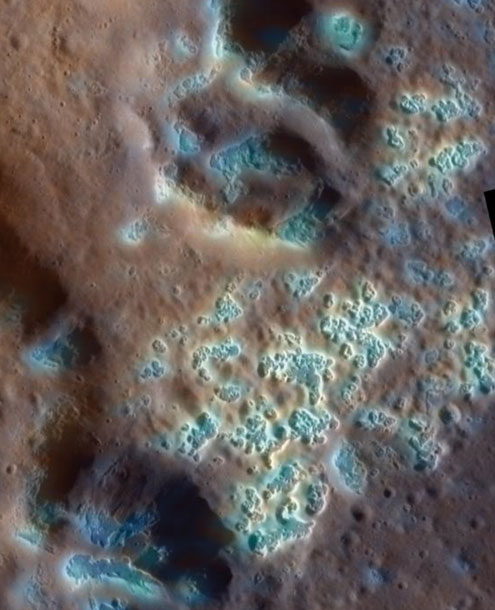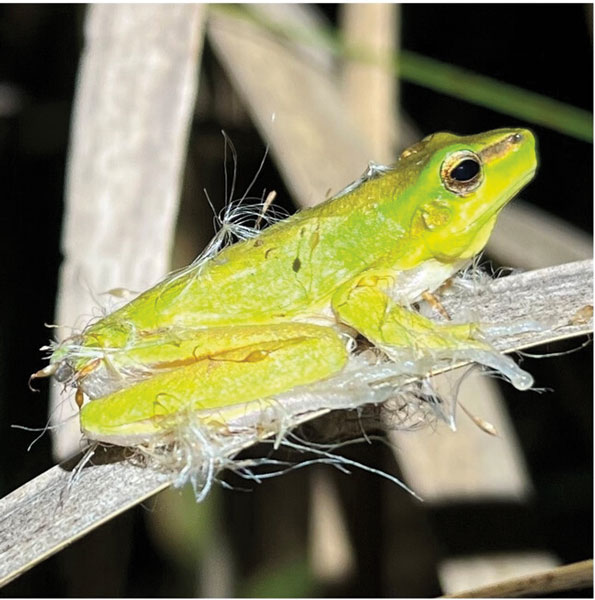
This Article From Issue
March-April 2024
Volume 112, Number 2
Page 72
In this roundup, managing editor Stacey Lutkoski summarizes notable recent developments in scientific research, selected from reports compiled in the free electronic newsletter Sigma Xi SmartBrief: www.smartbrief.com/sigmaxi
The Myth of Fingerprints
An artificial intelligence system found that prints from each of an individual’s fingers have enough similarities to match them to a single person, even if the prints are from different hands. Matching the loops and whorls on fingers is a tried-and-true method of identifying individuals in criminal cases and security protocols. It relies upon the commonly held assumption that each finger has a unique pattern. A team of computer scientists led by Gabe Guo of Columbia University fed approximately 60,000 fingerprints into an AI system called a deep contrastive network. They then presented the AI with two sets of paired prints—one set with intraperson fingerprints (prints from different fingers on the same person), and the other set with prints from different people. Given a single pair, the model identified intraperson fingerprints with 77 percent accuracy; when presented with multiple intraperson pairs, the accuracy grew to 88 percent. The team determined that the AI was using a novel matching method to obtain those results. Traditional forensics examines minutiae, the branching and endpoints in fingerprint ridges. Instead, the model focused on the angles and curvatures of the swirls in the center of the fingerprint. Intraperson fingerprint matching at crime scenes could connect prints left by different fingers to a single individual. It might also make it possible to unlock your phone with any finger.
Guo, G., A. Ray, M. Izydorczak, J. Goldfeder, H. Lipson, and W. Xu. Unveiling intra-person fingerprint similarity via deep contrastive learning. Science Advances 10:eadi0329 (January 12).
Salt Shaped Mercury’s Surface

NASA/JHU APL/CIW
Slow-moving glaciers made of salt may be responsible for some of the most puzzling features on Mercury’s surface. The planet has areas that appear to have been formed by erosion rather than by impacts, earthquakes, or volcanoes; however, there is no water or wind on Mercury, so the processes that created that terrain are unclear. A team of astronomers at the Planetary Science Institute propose that the smoothly eroded areas were created by large, moving mountains of halite (sodium chloride, the same molecule as table salt), perhaps mixed with other salts or organic compounds. The researchers found evidence in the imagery and data from NASA’s MESSENGER (MErcury Surface, Space ENvironment, GEochemistry, and Ranging) probe that indicates an abundance of subterranean halite in the planet’s crust. Impacts may have uncovered the halite, which formed into glacier-like mounds that flow across the planet, shaping the landscape in their wake. The researchers speculate that these salt glaciers could create potentially habitable subterranean environments. The European Space Agency’s BepiColombo probe, now en route to Mercury, will test the salt glacier hypothesis.
Rodriguez, J. A. P., et al. Mercury’s hidden past: Revealing a volatile-dominated layer through glacier-like features and chaotic terrains. The Planetary Science Journal 4:219 (November 17, 2023).
Improving the Morning Grind
The same physics that causes volcanoes to erupt could be the key to brewing a better cup of coffee. Portland State University volcanologist and coffee enthusiast Joshua Méndez Harper found that the surface charges created by the friction of grinding coffee are analogous to those in volcanic plumes and thunderclouds. His team compared how different roast colors and grind coarsenesses affected the triboelectrification (charges created through friction, such as static electricity) and fractoelectrification (charges created through breaking or cracking) of the resulting granules. They found that spritzing the whole beans with water can mitigate the charge created during processing, which enables better water percolation through the grounds. The result is a more homogeneous flavor extraction and better-tasting coffee. Suppressing the electrical charge also prevents clumps from accumulating during grinding, which in turn reduces waste and makes the process less messy. Méndez Harper and his coauthors encourage their readers to experiment at home to see whether a sprinkle of water improves their morning brew.
Méndez Harper, J., et al. Moisture-controlled triboelectrification during coffee grinding. Matter 7:266–283 (December 6, 2023).
Seeds Hitch Rides on Frogs

From Gould, 2024. CC-BY-NA-ND
Amphibians might be more important than previously thought in spreading seeds and helping plants propagate. Environmental scientists at the University of Newcastle in Australia observed eastern dwarf tree frogs (Litoria fallax) covered in seeds from broad-leaved cumbungi (Typha orientalis), which is a type of bulrush. The plant’s seeds evolved primarily for wind dispersal, but the same light and fluffy characteristics that enable air travel are also perfect for clinging to the frog’s wet skin. The researchers found that approximately 30 percent of the 200 frogs they observed had at least one seed stuck to their bodies, and some were carrying as many as 14 seeds on their legs, feet, bellies, and backs. Some of those frogs were found on plants that did not have seeds, so they must have picked up the seeds elsewhere and brought them to the new location. Amphibians are not often factored into the plant reproductive system because they are primarily carnivorous; however, these findings indicate that researchers should widen their view of potential plant vectors.
Gould, J., and J. W. Valdez. Stuck on you: Wind-dispersed seeds attach to the external surfaces of a tree frog. Ethology doi:10.1111/eth.13435 (January 3).

American Scientist Comments and Discussion
To discuss our articles or comment on them, please share them and tag American Scientist on social media platforms. Here are links to our profiles on Twitter, Facebook, and LinkedIn.
If we re-share your post, we will moderate comments/discussion following our comments policy.